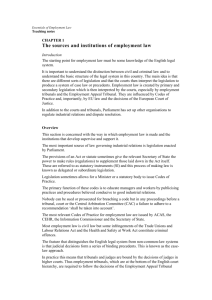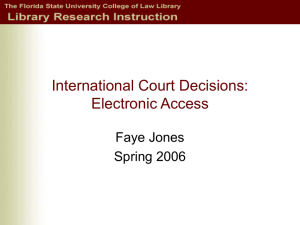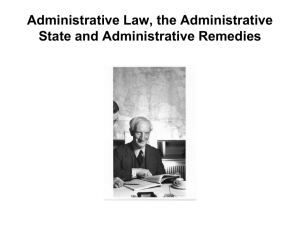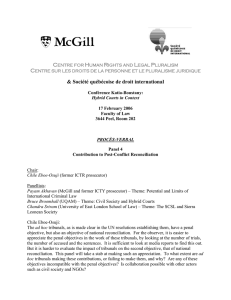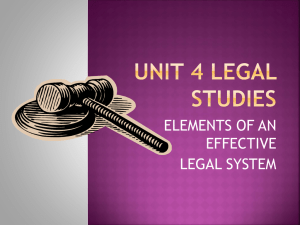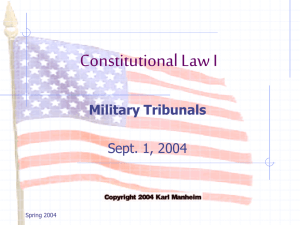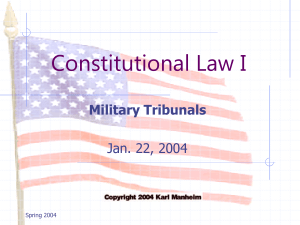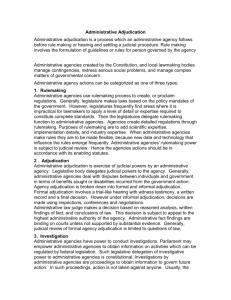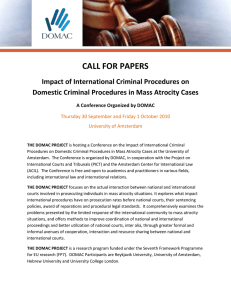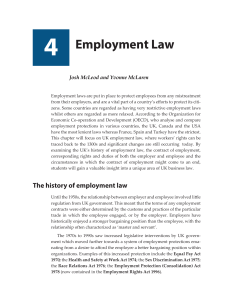The Structure and Function of Courts and Tribunals
advertisement
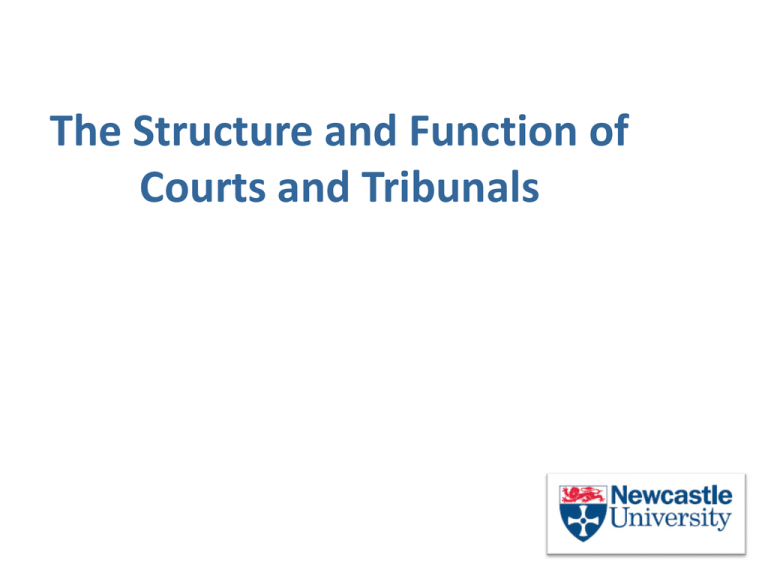
The Structure and Function of Courts and Tribunals The Court Hierarchy in England and Wales First, some terminology: Criminal and Civil Courts Trial and Appellate Courts Superior and Inferior Courts The Court Hierarchy in England and Wales The Court of Justice of the European Union (the European Court of Justice) Supreme Court of the United Kingdom Judicial Committee of the Privy Council Courts below this level are divided between civil and criminal cases The Court Hierarchy in England and Wales The Court of Appeal The distinction between the Civil and Criminal Divisions Binds all lower courts Also binds itself with exceptions What are the exceptions? - Young v Bristol Aeroplane [1944] 2 All ER 293 (CA) - R (on the application of M) v Secretary of State for Work and Pensions [2008] UKHL 63, [2009] 1 AC 311 The Court Hierarchy in England and Wales The High Court The Divisions of the High Court (Ch, Fam, QB) What is the Divisional Court? Queen’s Bench Division - Appeals by way of ‘case stated’ Family Division Chancery Division The Court Hierarchy in England and Wales Below the High Court.... County Court Crown Court Magistrates’ Courts Tribunals What are Tribunals? The Characteristics of Tribunals - Specialised - Employment Appeal Tribunal - Less formal than the courts Advantages of Tribunals - Speed - Cost - Informal - Flexible - Specialised - Help the courts - Awareness of Policy - Privacy The Composition of Tribunals Tribunals History of Tribunals Franks Committee 1957 Leggatt Review 2000 Transforming Public Services 2004 Tribunals, Courts and Enforcement Act 2007 The New Framework of Tribunals Control of Tribunals
